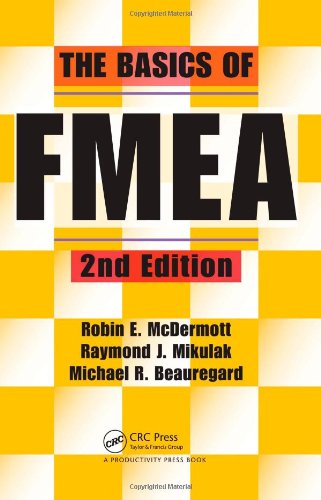

Most ebook files are in PDF format, so you can easily read them using various software such as Foxit Reader or directly on the Google Chrome browser.
Some ebook files are released by publishers in other formats such as .awz, .mobi, .epub, .fb2, etc. You may need to install specific software to read these formats on mobile/PC, such as Calibre.
Please read the tutorial at this link. https://ebooknice.com/page/post?id=faq
We offer FREE conversion to the popular formats you request; however, this may take some time. Therefore, right after payment, please email us, and we will try to provide the service as quickly as possible.
For some exceptional file formats or broken links (if any), please refrain from opening any disputes. Instead, email us first, and we will try to assist within a maximum of 6 hours.
EbookNice Team

Status:
Available4.5
30 reviewsDemonstrates How To Perform FMEAs Step-by-Step
Originally designed to address safety concerns, Failure Mode and Effect Analysis (FMEA) is now used throughout the industry to prevent a wide range of process and product problems. Useful in both product design and manufacturing, FMEA can identify improvements early when product and process changes are relatively easy and inexpensive to make.
Updated to include changes reflected in ISO/TX-16949:2002 standards and 2008 AIAG guidelines, The Basics of FMEA, Second Edition continues to provide the expert advice needed to help shorten the learning curve for FMEA teams to conduct effective and efficient FMEAs, even if it is their very first one.
Includes Ready-to-Use Worksheet Templates
Using a manufacturing case study, readers learn step-by-step how to use FMEAs to assess, evaluate, and prioritize areas of risk, and then to implement the actions needed to reduce risks to an acceptable level. It shows the steps needed to ferret out potential problems and prevent making inferior products that could endanger public and worker safety and compromise profits as well as the future of all stakeholders.
Although engineers have typically analyzed processes and products for potential failures, the FMEA process standardizes the approach and establishes a common language that nontechnical as well as technical employees can use at all levels. Unlike other improvement tools, FMEA does not require complicated statistics. However, they require a full commitment to quality and a willingness to take a team approach that involves all stakeholders.